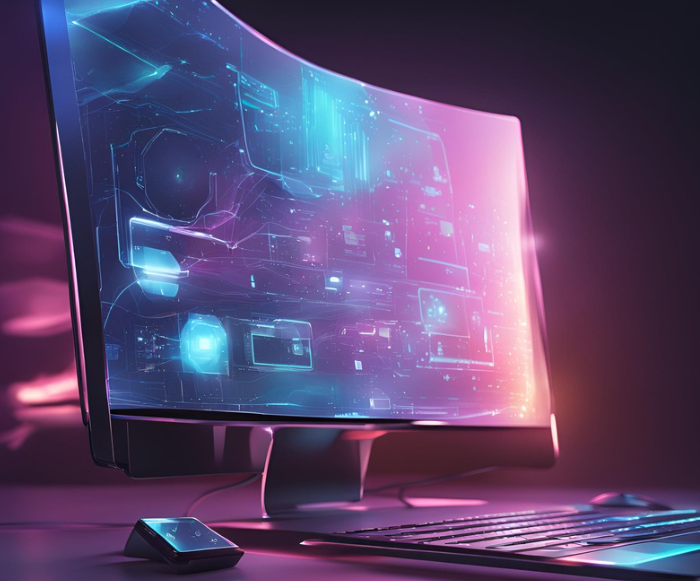design technologies ultra are redefining the boundaries of creativity and functionality. These advanced systems and solutions are not just about aesthetics; they are about creating luxurious, efficient, and highly personalized environments. With the integration of cutting-edge tools like 3D modeling software, VR, AR, and AI, design technologies ultra are transforming how designers work and collaborate. From sophisticated audio-video systems to intricate architectural design elements, these technologies are paving the way for a new era in custom design. In this article, we will delve into the innovative world of design technologies ultra, exploring how they streamline the design process, enhance user experience, and push the limits of what is possible in modern design.
Table of Contents
The Rise of Design Technologies Ultra
What Are Design Technologies Ultra?
Design technologies ultra encompass a wide range of advanced tools and solutions designed to streamline the design process from concept to completion. These include 3D modeling software, Virtual Reality (VR), Augmented Reality (AR), and Artificial Intelligence (AI).
Key Features of Design Technologies Ultra
- Advanced Visualization: Tools like VR and AR allow designers to visualize and interact with designs in a highly immersive and realistic way.
- Customization: AI and 3D modeling enable designers to create unique, personalized solutions that reflect the individual needs and preferences of clients.
- Efficiency: Automated design processes reduce the time and effort required to complete projects, allowing for more precise and efficient designs.
- Integration: Seamless integration of various systems, such as home automation, security, and entertainment, to create a cohesive user experience.
Custom Design: Tailoring Spaces to Individual Needs
The Importance of Personalization
Custom design is at the heart of design technologies ultra. It allows designers to create unique solutions that reflect the personality and preferences of their clients. Whether it’s a luxury home or a high-end office, custom design enables the integration of personal touches that make a space truly one-of-a-kind.
How Custom Design Works
- Client Consultation: Understanding the client’s needs and preferences through thorough consultations.
- Design Development: Using advanced tools to develop custom design solutions.
- Real-Time Adjustments: Making real-time adjustments and modifications to ensure the design aligns perfectly with the client’s vision.
- Installation: Ensuring seamless integration of all components during the installation phase.
The Role of Installation in Design Technologies Ultra
The Importance of Proper Installation
Installation is a critical aspect of implementing design technologies ultra. It involves not only the physical setup of systems but also the seamless integration of various components to create a cohesive environment. Proper installation ensures that all elements function harmoniously, enhancing the overall user experience.
Key Steps in Installation
- System Integration: Integrating multiple devices, such as lighting controls, security systems, and entertainment units, into a single user-friendly interface.
- Testing and Quality Control: Ensuring that every component is connected and operates smoothly.
- User Training: Providing clients with the necessary training to use the integrated systems effectively.
Architectural Design: A New Era of Creativity
The Impact of Advanced Software and Modeling Tools
Design technologies ultra are transforming architectural design by enabling designers to visualize and create complex structures that were once deemed impossible. With the help of advanced software and modeling tools, architects can experiment with shapes, materials, and layouts in ways that were previously unimaginable.
Innovations in Architectural Design
- Complex Structures: Designing unique and intricate structures that push the boundaries of conventional architecture.
- Sustainable Design: Incorporating sustainable materials and design principles to create environmentally friendly buildings.
- Interactive Design: Using VR and AR to allow clients to interact with and visualize the design before construction begins.
Technology Integration: The Key to Modern Design
The Importance of Seamless Integration
Technology integration is the backbone of design technologies ultra. It involves the seamless connection of various systems and devices to create a cohesive user experience. Whether it’s integrating home automation with audio-video systems or connecting security features with lighting controls, technology integration is essential for maximizing functionality.
Examples of Integrated Systems
- Home Automation: Integrating lighting, climate control, and security systems into a single user-friendly interface.
- Audio-Video Systems: Designing immersive entertainment experiences with strategically placed speakers and high-definition displays.
- Smart Buildings: Creating buildings that are fully automated and integrated, enhancing efficiency and user experience.
Real-Life Case Study: The Smart Luxury Home
A Practical Example of Design Technologies Ultra
In a recent project, an elite builder collaborated with a team of designers to create a smart luxury home that exemplified the principles of design technologies ultra. The goal was to integrate advanced home automation systems, sophisticated audio-video solutions, and custom design elements into a cohesive living space.
Key Features of the Project
- Advanced Home Automation: Automated lighting, climate control, and security systems controlled through a single interface.
- Sophisticated Audio-Video Systems: Immersive entertainment experiences with high-definition displays and strategically placed speakers.
- Custom Design Elements: Personalized design solutions that reflected the homeowners’ needs and preferences.
Conclusion
Design technologies ultra are revolutionizing the world of design by offering advanced tools and solutions that streamline the design process, enhance user experience, and push the limits of what is possible in modern design. From custom design and installation to architectural innovation and technology integration, these technologies are shaping the future of custom spaces. As we continue to embrace these innovations, we can expect to see a transformation in how spaces are conceived and experienced.










